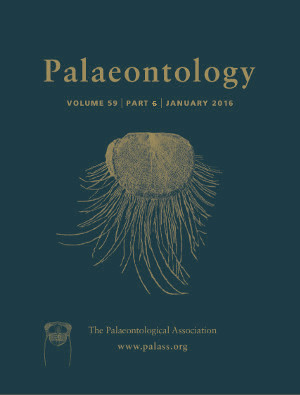Reg. Charity No. 1168330

Malacostracan crustaceans of the fossil order Pygocephalomorpha are conspicuous elements in brackish to freshwater faunas in the upper Carboniferous of Laurentia and lower Permian of Gondwana. A pronounced sexual dimorphism is recognizable within its members, with Pygocephalomorpha females bearing oöstegites: modified epipodites that hold a brood pouch where the eggs develop until juvenile stage, with no planktonic dispersal of larvae. The preservation of oöstegites is quite rare and is described here for the first time from the American continents. The specimens, ventrally preserved Liocaris huenei females bearing oöstegites, come from the Irati Formation, a lower Permian sequence of the Paraná Basin, from an outcrop in southern Brazil. The oöstegites are similar to those previously described for Pygocephalomorpha, displaying seven pairs of overlapping epipodites that cover the whole cephalothorax. The scarcity of these structures in the fossil record may be explained by taphonomic bias (it requires ventrally preserved crustaceans) but more likely by palaeobiological aspects, such as preservation of an ovigerous moult. The record from the Irati Formation suggests that pygocephalomorphs had seasonal reproduction, with females maturing at the same time and acquiring oöstegites that would be lost after the release of juveniles. This record confirms the relationship of the Brazilian Liocaris Beurlen to the English Pygocephalus Huxley and South African Notocaris Broom pygocephalomorphs and provides an insight into its palaeoecological significance.